Study on Risk Mitigation Measures for Atmospheric Storage Tank of Acrylic Acid Due to Abnormal Weather Conditions
Abstract
1. Introduction
2. Characteristics of Target Substance
3. Analysis of Temperature Effects on Acrylic Acid in Atmospheric Storage Tanks Under Abnormal Weather Conditions
3.1. Current Status of Abnormal Weather Occurrences
3.2. Case Studies of Accidents in Atmospheric Storage Tanks Due to Abnormal Weather Conditions
4. Risk Assessment
4.1. Process Details of Acrylic Acid Storage Tank
4.2. Hazard and Operability (HAZOP) Study
4.3. Improvement in Risk Assessment
4.4. Layer of Protection Analysis (LOPA)
- F: Accident frequency ()
- f: initial accident rate ()
- PFDi = Probability of Failure on Demand ()
4.5. Dispersion Distance Analysis
- C (x, y, z): Concentration of the substance at point (x, y, z)
- Q: Mass flow rate (kg/s)
- u: Wind speed (m/s)
- x: downwind distance (m)
- y: crosswind distance (m)
- z: vertical distance (m)
4.6. Discussion
5. Conclusions
Author Contributions
Funding
Data Availability Statement
Conflicts of Interest
References
- Catholic University of Louvain (UCL), EM-DAT: The Emergency Events Database, Centre for Research on Epidemiology of Disaster (CRED). Available online: https://www.emdat.be/ (accessed on 25 October 2019).
- Chakraborty, A.; Ibrahim, A.; Cruz, A.M. A study of accident investigation methodologies applied to the Natech events during the 2011 Great East Japan earthquake. J. Loss Prev. Process Ind. 2018, 51, 208–222. [Google Scholar] [CrossRef]
- Cozzani, V.; Campedel, M.; Renni, E.; Krausmann, E. Industrial accidents triggered by flood events Analysis of past accidents. J. Hazard. Mater. 2009, 175, 501–509. [Google Scholar] [CrossRef] [PubMed]
- Cozzani, V.; Antonioni, G.; Landucci, G.; Tugnoli, A.; Bonvicini, S.; Spadoni, G. Quantitative assessment of domino and NaTech scenarios in complex industrial areas. J. Loss Prev. Process Ind. 2013, 28, 10–22. [Google Scholar] [CrossRef]
- Ricci, F.; Moreno, V.C.; Cozzani, V. Analysis of NaTech Accidents Triggered by Extreme Temperatures in the Chemical and Process Industry. Chem. Eng. Trans. 2020, 82, 79–84. [Google Scholar]
- Ricci, F.; Moreno, V.C.; Cozzani, V. Natech accidents triggered by cold waves. Process Saf. Environ. Prot. 2023, 173, 107–119. [Google Scholar] [CrossRef]
- Yim, J.P.; Park, S.Y. A study on safety of Atmospheric storage tank through detailed analysis of accident case. J. Korean Soc. Saf. 2019, 34, 41–48. [Google Scholar]
- Chang, J.I.; Lin, C.C. A study of storage tank accidents. J. Loss Prev. Process Ind. 2006, 19, 51–59. [Google Scholar] [CrossRef]
- Qin, R.; Zhu, J.; Khakzad, N. Multi-hazard failure assessment of atmospheric storage tanks during hurricanes. J. Loss Prev. Process Ind. 2020, 68, 104325. [Google Scholar] [CrossRef]
- Necci, A.; Argenti, F.; Landucci, G.; Cozzani, V. Accident scenarios triggered by lightning strike on atmospheric storage tanks. Reliab. Eng. Syst. Saf. 2014, 127, 30–46. [Google Scholar] [CrossRef]
- Olivar, O.J.; Mayorga, S.Z.; Giraldo, F.M.; Sánchez-Silva, M.; Pinelli, J.P.; Salzano, E. The effects of extreme winds on atmospheric storage tanks. Reliab. Eng. Syst. Saf. 2020, 195, 106686. [Google Scholar] [CrossRef]
- Trávníček, P.; Junga, P.; Kudělka, J.; Kotek, L. Prevention of an atmospheric storage tank bund failure. J. Loss Prev. Process Ind. 2021, 70, 104438. [Google Scholar] [CrossRef]
- Griffin, M.L. Protecting atmospheric storage tanks against vacuum collapse. J. Loss Prev. Process Ind. 2000, 13, 83–89. [Google Scholar] [CrossRef]
- National Institute of Chemical Safety, Integrated Chemical Information System. Available online: https://icis.me.go.kr/pageLink.do (accessed on 3 February 2025).
- Korea Occupational Safety and Health Agency. Leak Accident Due to Rupture of Overpressure Vent of Waste Acid Storage Tank; Korea Occupational Safety and Health Agency: Incheon, Republic of Korea, 2018. [Google Scholar]
- Korea Occupational Safety and Health Agency. Thermal Risk Assessment of Styrene Monomer; Korea Occupational Safety and Health Agency: Incheon, Republic of Korea, 2015. [Google Scholar]
- KOSHA (Korea Occupational Safety and Health Agency); Industrial Safety and Health Agency. Thermal Risk Assessment of Acrylic Acid; Korea Occupational Safety and Health Agency: Incheon, Republic of Korea, 2022. [Google Scholar]
- Vince, I. Acrylic acid runaway. Loss Prev. Bull. 2020, 272, 13–16. [Google Scholar]
- LG Chem. Safe Handling and Storage of Acrylic Acid and Acrylates. Available online: https://www.lgchemon.com (accessed on 3 February 2025).
- Korea Occupational Safety and Health Agency. KOSHA Guide (D-35-2017). In Technical Guidelines for the Design of Atmospheric Pressure Storage Tanks; Korea Occupational Safety and Health Agency: Incheon, Republic of Korea, 2017. [Google Scholar]
- Seol, M.-s. A Study on Implications for the Prevention of Major Industrial. Korean J. Hazard. Mater. 2022, 10, 97–106. [Google Scholar] [CrossRef]
- Available online: https://data.kma.go.kr/climate/tropicalNight/selectTropicalNightChart.do (accessed on 3 February 2025).
- ISO 31000; Risk Management—Guidelines. International Organization for Standardization: Geneva, Switzerland, 2018.
- Available online: https://www.newspim.com/news/view/20220530000814 (accessed on 3 February 2025).
- Korea Occupational Safety and Health Agency. Technical Guidelines on the HAZOP Method for Risk and Operational Analysis of Batch Processes; Korea Occupational Safety and Health Agency: Incheon, Republic of Korea, 2017; p. 86. [Google Scholar]
- Willey, R.J. Layer of Protection Analysis. Procedia Eng. 2014, 84, 12–22. [Google Scholar] [CrossRef]
- Anato, L.; Carrero, L.; Brouillard, G.; Morar, C. Application and challenges of layers of protection analysis LOPA in mining processes: Insights into benefits and limitations. Process Saf. Prog. 2024, 43, 469–477. [Google Scholar] [CrossRef]
- Korea Meteorological Administration. Available online: https://www.weather.go.kr/w/index.do (accessed on 3 February 2025).
- Korea Meteorological Administration. Available online: https://data.kma.go.kr/cmmn/main.do (accessed on 3 February 2025).
- Center for Chemical Process Safety. Layer of Protection Analysis (Simplified Process Risk Assessment); Center for Chemical Process Safety: New York, NY, USA, 2001; pp. 31–149. [Google Scholar]
- Korea Occupational Safety and Health Agency. KOSHA Guide (P-113-2023). In Technical Guidelines for the Layers of Protection Analysis (LOPA) Technique; Korea Occupational Safety and Health Agency: Incheon, Republic of Korea, 2023. [Google Scholar]
- Korea Occupational Safety and Health Agency. KOSHA Guide (P-102-2012). In Technical Guideline for Accident Damage Prediction Technique; Korea Occupational Safety and Health Agency: Incheon, Republic of Korea, 2012. [Google Scholar]


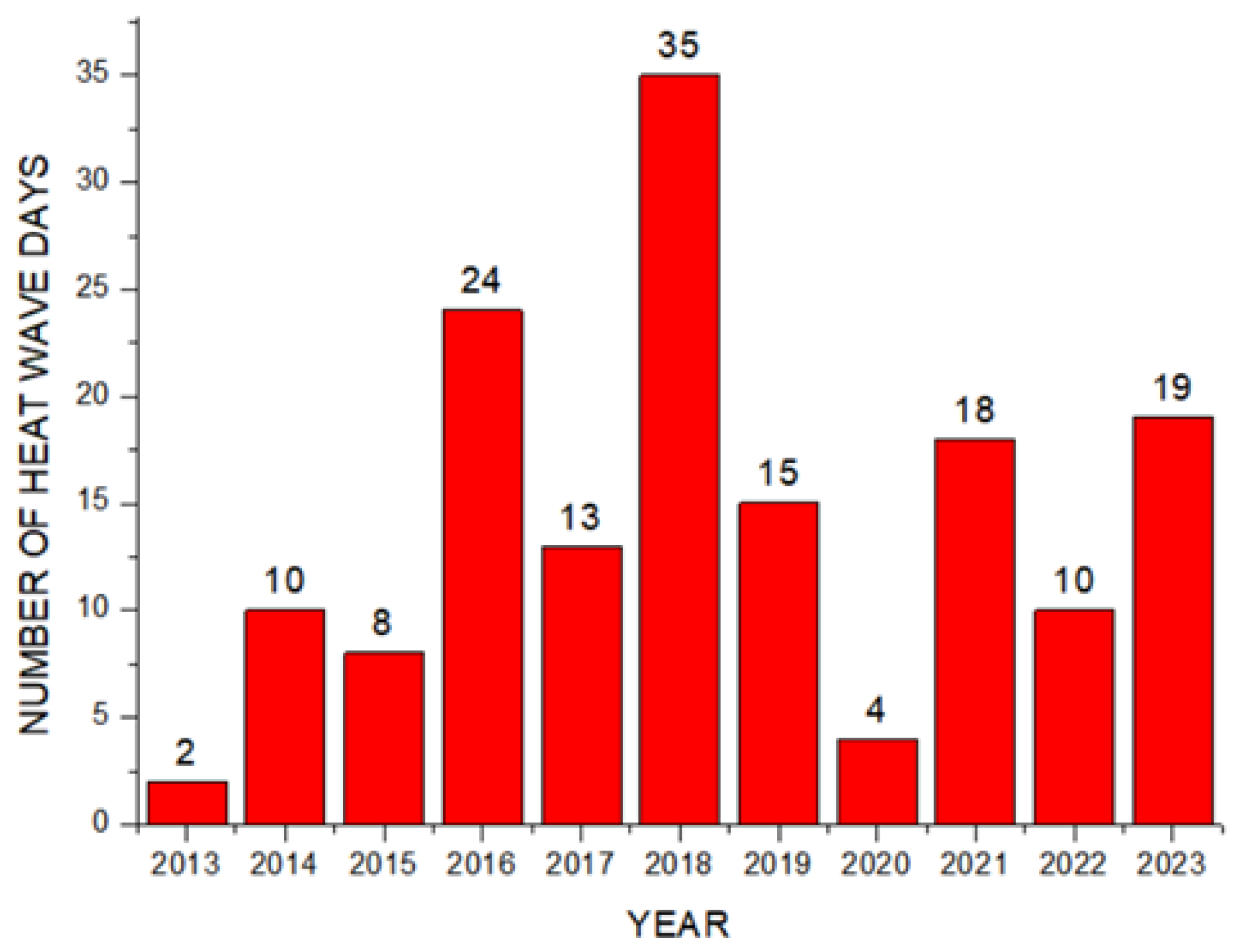

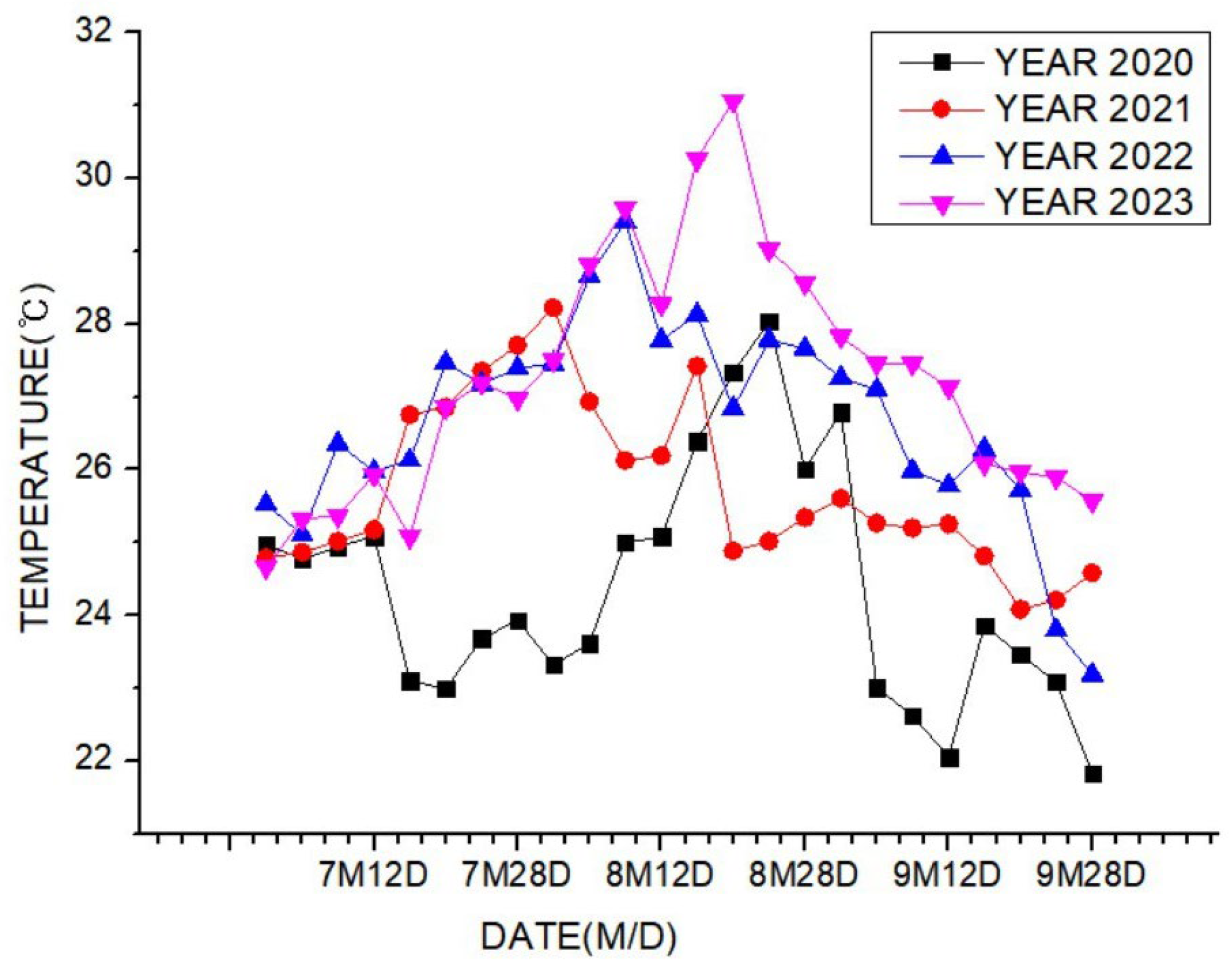
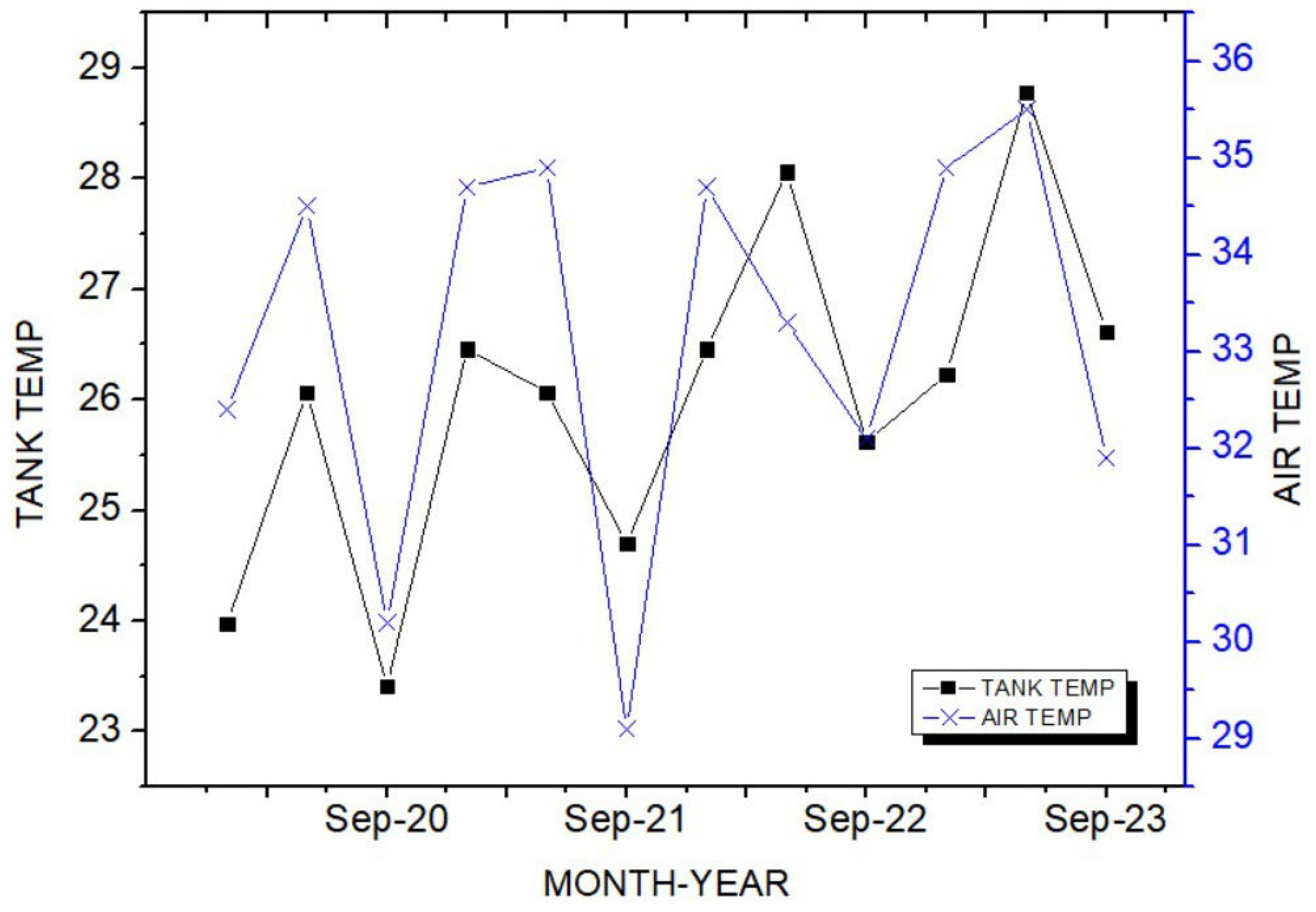

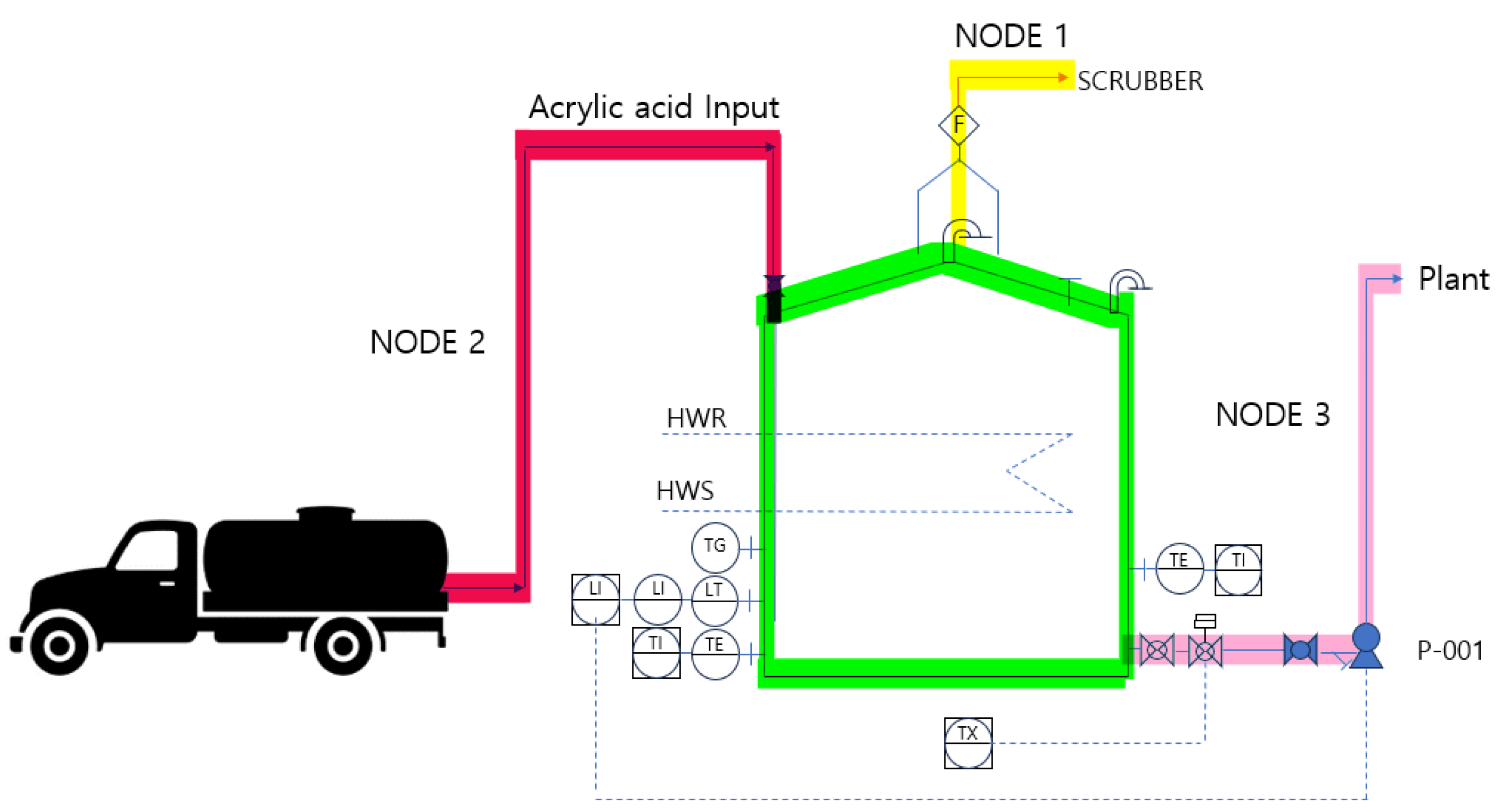



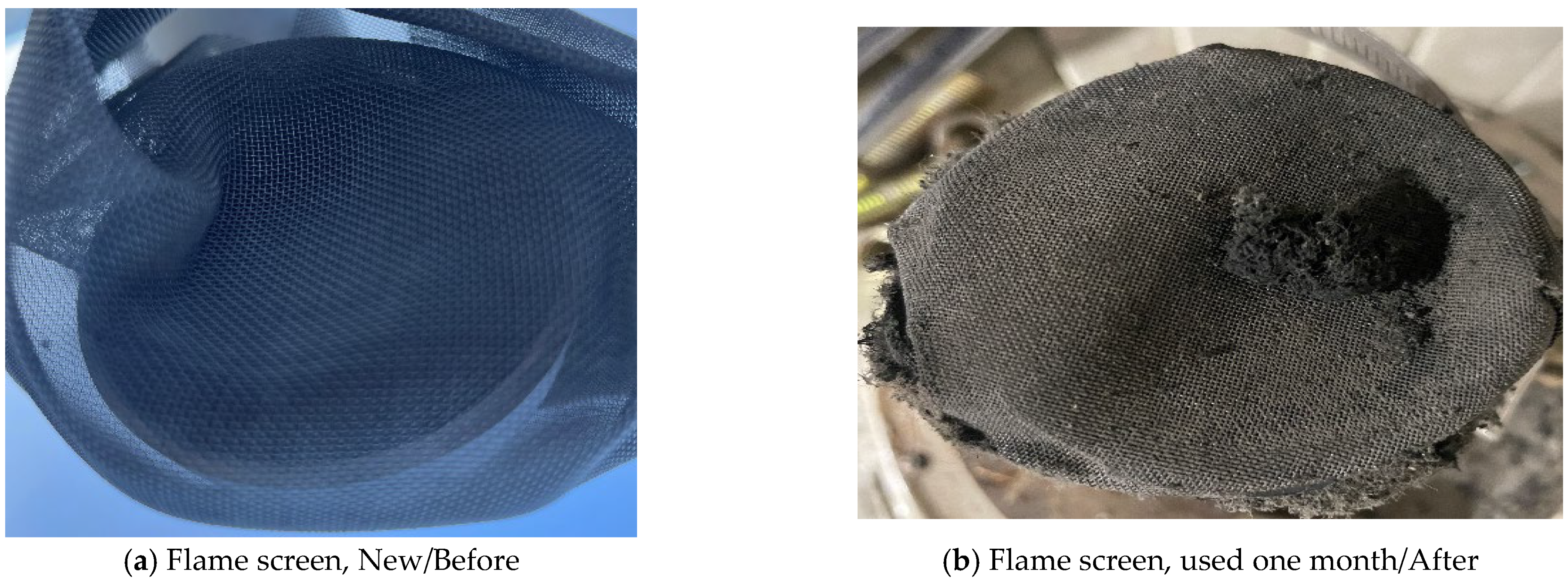
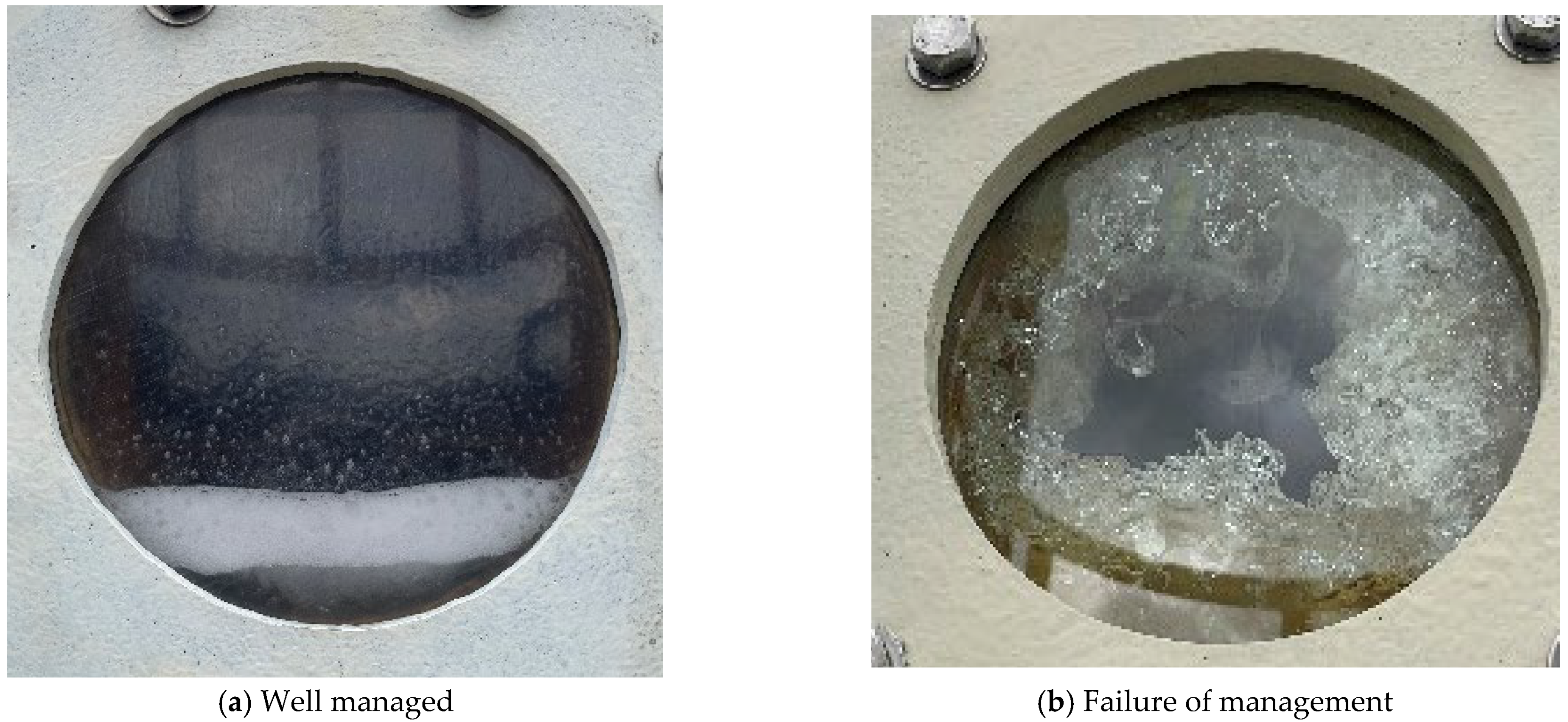
| NFPA | Hazard | Value | Description |
|---|---|---|---|
 |  Health Health | 3 | Can cause serious or permanent injury |
 Flammability Flammability | 2 | Must be moderately heated or exposed to relatively high ambient temperatures before ignition can occur | |
 Instability Instability | 2 | Readily undergoes violent chemical changes at elevated temperatures and pressure | |
| Special | - |
| Structure (Acrylic Acid) | Molecular Weight (g/mol) | Flash Point (°C) | Explosion Limit (%) | Boiling Point (°C) | Melting Point (°C) |
|---|---|---|---|---|---|
 CH2=CHCOOH | 76 | 49 | 2–8 | 141 | 14 |
| Year | 2020 | 2021 | 2022 | 2023 |
|---|---|---|---|---|
| Low temperature (°C) | 21.7 | 23.9 | 23.2 | 24.6 |
| High temperature (°C) | 28.1 | 28.2 | 29.0 | 32.1 |
| Date | Location | Accident Overview |
|---|---|---|
| May 2022 | Jeonbuk | The upper cover of a methacrylic acid storage tank exploded due to high temperature, causing a leak. |
| May 2021 | Seoul | While disposing of acrylic acid, an abnormal reaction caused dispersion, injuring one person. |
| July 2019 | Chungbuk | During mixing, an exothermic reaction caused temperature to rise, leading to reactor overheating and smoke emission. |
| May 2019 | Gyeoggi | During the mixing process of epoxy and acrylic acid, an abnormal reaction occurred, causing smoke. |
| November 2013 | Chungbuk | During the mixing process of acrylic acid and resin at an eyeglass lens raw material manufacturing plant, heat was generated, leading to a vapor leak. |
| July 2013 | Incheon | A reactor exploded at a synthetic resin factory, causing acrylic acid vapor to leak. |
| Date | Location | Accident Overview |
|---|---|---|
| September 2012 | Japan | A runaway polymerization in an acrylic acid tank caused an explosion and fire, killing one person and injuring 36 others. |
| March 2006 | USA | Excess monomer addition during scale-up caused a runaway reaction and explosion, killing 1 person and injuring 14 others. |
| December 2001 | Taiwan | An overheated reactor triggered a runaway reaction and vapor cloud, killing 1 person, injuring 112 others, and damaging 46 factories ($10 million loss). |
| September 1998 | Japan | Overheating of an acrylic acid drum caused polymerization and gas release, triggering an explosion upon cooling and coming into contact with water. |
| May 1983 | USA | A 500-gallon acrylic monomer tank exploded due to an external fire, injuring 40 people. |
| July 1969 | Japan | A 200-L acrylic acid drum exploded from a runaway reaction caused by local overheating and inhibitor degradation, collapsing the factory. |
| Stream no. | 1 | 2 | 3 | 4 |
|---|---|---|---|---|
| Process | Input | Output | Scrubber | Storage tank |
| Phase | Liquid | Liquid | Vapour | Liquid |
| Temperature (°C) | 20 | 25 | 25 | 10–30 |
| Pressure (Mpa) | 0.2 | 0.2 | ATM | ATM |
| Flow rate (m3/h) | 30 | 65 | - | - |
| Concentrate | 100% | 100% | - | 100% |
| Node No. | Node Details |
|---|---|
| Node 1 | Storage Tank—Scrubber |
| Node 2 | Tank lorry—Storage Tank |
| Node 3 | Storage Tank—Plant |
| Node | Deviation | Cause | Consequence | Protection | F | C | Risk | Recommendation |
|---|---|---|---|---|---|---|---|---|
| Node1 | Pressure increase | Rapid increase of polymers in the scrubber and vent cause high temperature-induced vapor pressure rise | Atmospheric tank pressure rise Explosion fire risk | Emergency vent open | 2 | 4 | 8 (3) | Identify and eliminate the case of pressure increase at Hot temperatures |
| Node2 | Weight increase | Other material input Continuous input | Unexpected reaction Overflow | Input Pipe Size (by Raw Material) & Level Transmitter | 2 | 2 | 4 (2) | HH interlock and alarm |
| Node3 | Pressure decrease | Negative pressure during pumping | Tank damage | vent | 2 | 2 | 4 (2) | - |
| Discharge Rate | <1 ton | <10 ton | <100 ton | <1000 ton | ≥1000 ton | |
|---|---|---|---|---|---|---|
| Flash Point | ||||||
| ≤21 °C | 3 | 4 | 4 | 5 | 5 | |
| ≤70 °C | 2 | 3 | 4 | 4 | 4 | |
| ≤200 °C | 1 | 2 | 3 | 4 | 4 | |
| ≤250 °C | 1 | 2 | 2 | 3 | 4 | |
| ≥250 °C | 1 | 1 | 2 | 2 | 3 | |
| Initiating Event | A Value Chosen by a Company for Use in LOPA (/yr) |
|---|---|
| Pressure Vessel Residual Failure | 1 × 10−6 |
| Piping Residual Failure—100 m—Full Break | 1 × 10−5 |
| Atmospheric Tank Failure | 1 × 10−3 |
| Active IPLs | Passive IPLs | Human Action IPLs | |||
|---|---|---|---|---|---|
| IPL | IPL | PFD | IPL | PFD | |
| Relief valve | 1 × 10−2 | Dike | 1 × 10−2 | Human action with 10 min response time | 1 × 10−2 |
| Rupture disk | 1 × 10−2 | Underground Drainage System | 1 × 10−2 | Human response to BPCS with 40 min | 1 × 10−1 |
| Basic Process Control System | 1 × 10−1 | Open valve (no valve) | 1 × 10−2 | Human action with 40 min | 1 × 10−1 |
| Inherently safe Design | 1 × 10−2 | ||||
 |
| ERPG | Present | After | |||||
|---|---|---|---|---|---|---|---|
| Temp | ERPG-1 1 ppm | ERPG-2 50 ppm | ERPG-3 250 ppm | ERPG-1 1 ppm | ERPG-2 50 ppm | ERPG-3 250 ppm | |
| 10 °C | 13 | 30 | 246 | 11 | 24 | 191 | |
| 20 °C | 19 | 42 | 360 | 15 | 34 | 276 | |
| 30 °C | 25 | 58 | 518 | 20 | 46 | 396 | |
| 40 °C | 34 | 78 | 741 | 27 | 61 | 557 | |
Disclaimer/Publisher’s Note: The statements, opinions and data contained in all publications are solely those of the individual author(s) and contributor(s) and not of MDPI and/or the editor(s). MDPI and/or the editor(s) disclaim responsibility for any injury to people or property resulting from any ideas, methods, instructions or products referred to in the content. |
© 2025 by the authors. Licensee MDPI, Basel, Switzerland. This article is an open access article distributed under the terms and conditions of the Creative Commons Attribution (CC BY) license (https://creativecommons.org/licenses/by/4.0/).
Share and Cite
Jeong, G.; Nam, M.; Kim, J.; Yoo, B.-T. Study on Risk Mitigation Measures for Atmospheric Storage Tank of Acrylic Acid Due to Abnormal Weather Conditions. Processes 2025, 13, 1607. https://doi.org/10.3390/pr13051607
Jeong G, Nam M, Kim J, Yoo B-T. Study on Risk Mitigation Measures for Atmospheric Storage Tank of Acrylic Acid Due to Abnormal Weather Conditions. Processes. 2025; 13(5):1607. https://doi.org/10.3390/pr13051607
Chicago/Turabian StyleJeong, Gabgi, Minseo Nam, Jaeyoung Kim, and Byung-Tae Yoo. 2025. "Study on Risk Mitigation Measures for Atmospheric Storage Tank of Acrylic Acid Due to Abnormal Weather Conditions" Processes 13, no. 5: 1607. https://doi.org/10.3390/pr13051607
APA StyleJeong, G., Nam, M., Kim, J., & Yoo, B.-T. (2025). Study on Risk Mitigation Measures for Atmospheric Storage Tank of Acrylic Acid Due to Abnormal Weather Conditions. Processes, 13(5), 1607. https://doi.org/10.3390/pr13051607







